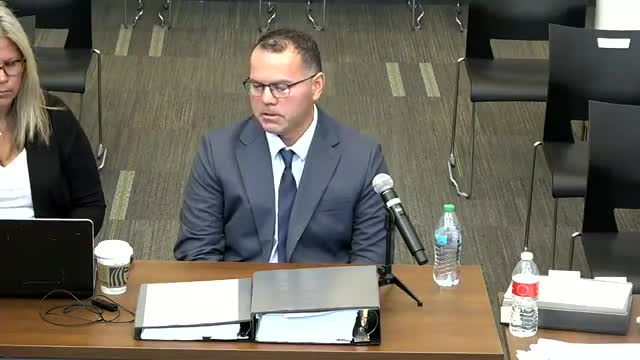Whistleblower challenges chief over counseling memorandum
September 11, 2024 | Orland Park, Cook County, Illinois
This article was created by AI summarizing key points discussed. AI makes mistakes, so for full details and context, please refer to the video of the full meeting. Please report any errors so we can fix them. Report an error »

In a recent government meeting, a heated discussion emerged surrounding a memorandum issued by the chief of a department, which has raised concerns about workplace communication and the handling of complaints. The memorandum, dated May 19, was described by the recipient as a counseling document, despite the individual asserting that they had not engaged in any rumor-spreading or misconduct.
The recipient expressed confusion and distress over the contents of the memo, particularly a statement advising against spreading rumors, which they claimed was unfounded. They emphasized that all information shared with the chief was truthful and had been communicated directly and openly, as previously agreed upon. The individual highlighted that they had approached the chief with concerns since May 3, and felt that their actions were in line with departmental expectations.
During the meeting, the recipient noted that they had never received a counseling memorandum before and questioned the appropriateness of the chief's actions. They referenced a general order regarding counseling memorandums, which stipulates that such documents should be placed in an employee's personnel file. The recipient maintained that they had every reason to believe the chief would adhere to these guidelines, as no clarification was provided to suggest otherwise.
The dialogue also touched on the implications of the memorandum for workplace dynamics, particularly regarding perceived disparities in how complaints are handled among staff members of different backgrounds. The recipient's insistence on the validity of their concerns and the procedural adherence of the chief raises questions about transparency and equity within the department.
As the meeting progressed, the atmosphere remained tense, with the recipient seeking clarity on the chief's intentions and the future handling of their complaints. The outcome of this discussion could have significant ramifications for workplace culture and the management of employee grievances moving forward.
The recipient expressed confusion and distress over the contents of the memo, particularly a statement advising against spreading rumors, which they claimed was unfounded. They emphasized that all information shared with the chief was truthful and had been communicated directly and openly, as previously agreed upon. The individual highlighted that they had approached the chief with concerns since May 3, and felt that their actions were in line with departmental expectations.
During the meeting, the recipient noted that they had never received a counseling memorandum before and questioned the appropriateness of the chief's actions. They referenced a general order regarding counseling memorandums, which stipulates that such documents should be placed in an employee's personnel file. The recipient maintained that they had every reason to believe the chief would adhere to these guidelines, as no clarification was provided to suggest otherwise.
The dialogue also touched on the implications of the memorandum for workplace dynamics, particularly regarding perceived disparities in how complaints are handled among staff members of different backgrounds. The recipient's insistence on the validity of their concerns and the procedural adherence of the chief raises questions about transparency and equity within the department.
As the meeting progressed, the atmosphere remained tense, with the recipient seeking clarity on the chief's intentions and the future handling of their complaints. The outcome of this discussion could have significant ramifications for workplace culture and the management of employee grievances moving forward.
View full meeting
This article is based on a recent meeting—watch the full video and explore the complete transcript for deeper insights into the discussion.
View full meeting
